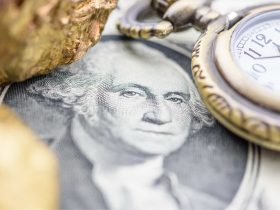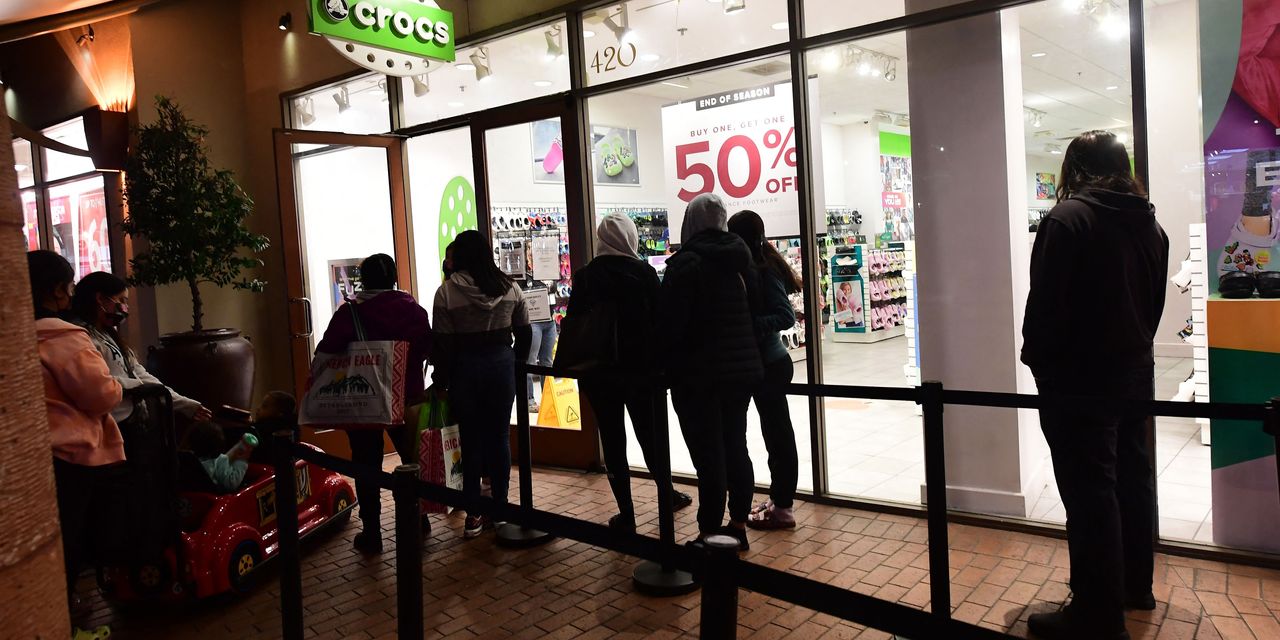With summer travel season winding down and holiday gift-giving season ahead, consumers are shifting their spending to goods from services. So, this is a good time to buy retail stocks. Corporate insiders certainly agree. They’ve buying at several retail sector companies, including the three highlighted below.
But first, more on that spending shift. “It’s time for goods to be good,” JPMorgan Chase economist Bruce Kasman wrote in a recent research note. “A broader rebound in global consumer goods spending is underway. The case for a rebound in global industry is building.”
Kasman points to several signposts. For starters, supply chain disruptions continue to ease, which puts downward pressure on prices, making goods more attractive. Global auto sales bottomed last quarter. Orders for goods in general are up, around the world.
Shoppers have increased spending at stores by a surprising amount. U.S. retail sales grew 0.7% in September compared to the month before, against an estimated 0.3% gain, the Commerce Department reported this week. Growth was strongest at miscellaneous retailers (up 3% vs. August), auto dealers (up 1.1%) non-store retailers (1.1%).
Putting these trends together, Kasman notes that he expects a 3% rise in global manufacturing in the second half of this year.
Meanwhile, service-sector demand appears to be weakening. September airfare increased 0.3% compared to a 4.9% jump in August, notes Charles Schwab Chief Investment Strategist Liz Ann Sonders. A look ahead to the holiday travel season confirms the trend.
“Early data about holiday travel indicates revenge travel may have run its course,” notes Ed Yardeni of Yardeni Research. Prices for holiday air travel and car rentals are down a lot compared to last year. Flights around Christmas are 12% cheaper than in 2022. Thanksgiving airfares are 14% lower and car rentals 17% lower than last year.
Travel-related stocks tell the same story. They are down a lot from the summer, predicting weaker business trends ahead. Here’s a chart from Yardeni Research:
Not to get too wonky, but upstream indicators for services also point to a cooling off. Institute for Supply Management (ISM) service sector data for September show signs of cracks in demand. The percentage of service sector companies saying business activity was lower was elevated in September and August at 10.7% and 16.5%, vs. 7.5% in July and 9.7% in June.
Retail stocks also look interesting because they have underperformed this year, notes Goldman Sachs chief U.S. equity strategist David Kostin.
The bottom line: Consumers continue to have a lot of buying power because of ongoing jobs and wage growth — plus elevated savings. Cash socked away was recently revised up threefold to $1.2 trillion, by the Bureau of Economic Analysis. Boomers collectively have net worth of $77 trillion. Going forward, consumers will be deploying more of this spending power on goods vs. services, benefitting retailers. I look at insider buying closely; here are three stocks that stand out:
1. Victoria’s Secret (VSCO)
Victoria’s Secret
VSCO,
sells lingerie, apparel and personal care products under the Victoria’s Secret, PINK and Adore Me brands. International sales growth has been strong, but U.S. sales were recently quite weak and that’s pulled the stock down more than 60% from its February peak. Overall, second quarter sales (for the quarter ending in July) fell 6%, to $1.4 billion compared to the year before, and comparable sales (at stores open more than a year) decreased 11%.
The travel craze probably had something to do with this. Likewise, the shift back to goods spending going forward should perk up sales. Victoria’s Secret managmeent expresses high hopes for the rest of the year, citing several fresh tactics. “Our outlook calls for improving sales trends throughout the fall season,” CEO Martin Waters has said. “We entered the third quarter with relatively lean inventory levels, and I am encouraged by August sales trends which were better than July.”
The company adds that it has improved its loyalty program. A new marketing campaign for PINK is being launched, and its September Victoria’s Secret World Tour ’23 may boost sales. As for insider support, finance chief Timothy Johnson bought $343,000 worth of stock recently at $17.16.
2. Five Below (FIVE)
Five Below
FIVE,
a Philadelphia-based specialty retailer, offers clothes and other goods mostly priced at $5 or lower — targeting the teen and tween markets. Besides clothes, it offers jewelry, hair accessories, “attitude” t-shirts, sports merchandise, art supplies and candy.
The company posted second-quarter sales of $1.48 billion. Most of that was due to 67 store openings. Still, comparable sales increased by 2.7% which isn’t bad. Management expects similar growth ahead. “As we look to the second half of the year, our merchants have sourced a terrific line-up of fresh, trend-right product at outstanding value for the holiday season,” CEO Joel Anderson said.
Managers are always bullish. I like to look for the ones backing their words with cash. In early September Anderson bought $500,000 worth of stock at $161.50. The stock is higher now at $176, but the trend towards buying more goods again should still help move it up from here. Insiders do not buy for short-term moves.
3. Crocs (CROX)
Since peaking at $150 back in April, the shares of this ugly shoe company have fallen 42% to $87. In the pullback the right kind of insiders have shown up to purchase Crocs
CROX,
shares in a way that provides a powerful buy signal.
Crocs sells casual footwear and accessories. Most of its footwear is made out of its proprietary Croslite material, which gets good reviews for comfort. Crocs has been making shoes since it rolled out its original clogs in 2002. It has expanded into sandals, wedges, flips, and slides. It also sells Jibbitz charms. It recently purchased Hey Dude, a shoe company.
Crocs posted solid second-quarter sales growth of 12%, with 31.4% earnings growth. That was fueled by sales in Asia. Recently, investors have been clearing out of China stocks on concerns about economic growth there. This – plus the focus on revenge travel spending — might help explain Crocs’ share-price weakness.
In the pullback, a cluster of company insiders purchased more than $2 million worth of stock in August. Such concerted buying is a bullish signal in insider analysis. The buyers also have good records for timing. The buying happened in the $95 to $111 range, and the stock is lower now.
Michael Brush is a columnist for MarketWatch. At the time of publication, he owned CROX. Brush has suggested CROX in his stock newsletter, Brush Up on Stocks. Follow him on X @mbrushstocks
More: What’s fueling consumers’ ‘surprising’ spending power? Refinanced mortgages play a role, NY Fed says
Plus: Birkenstock’s IPO was one of the worst debuts for a billion-dollar deal in a decade
Read the full article here













Leave a Reply